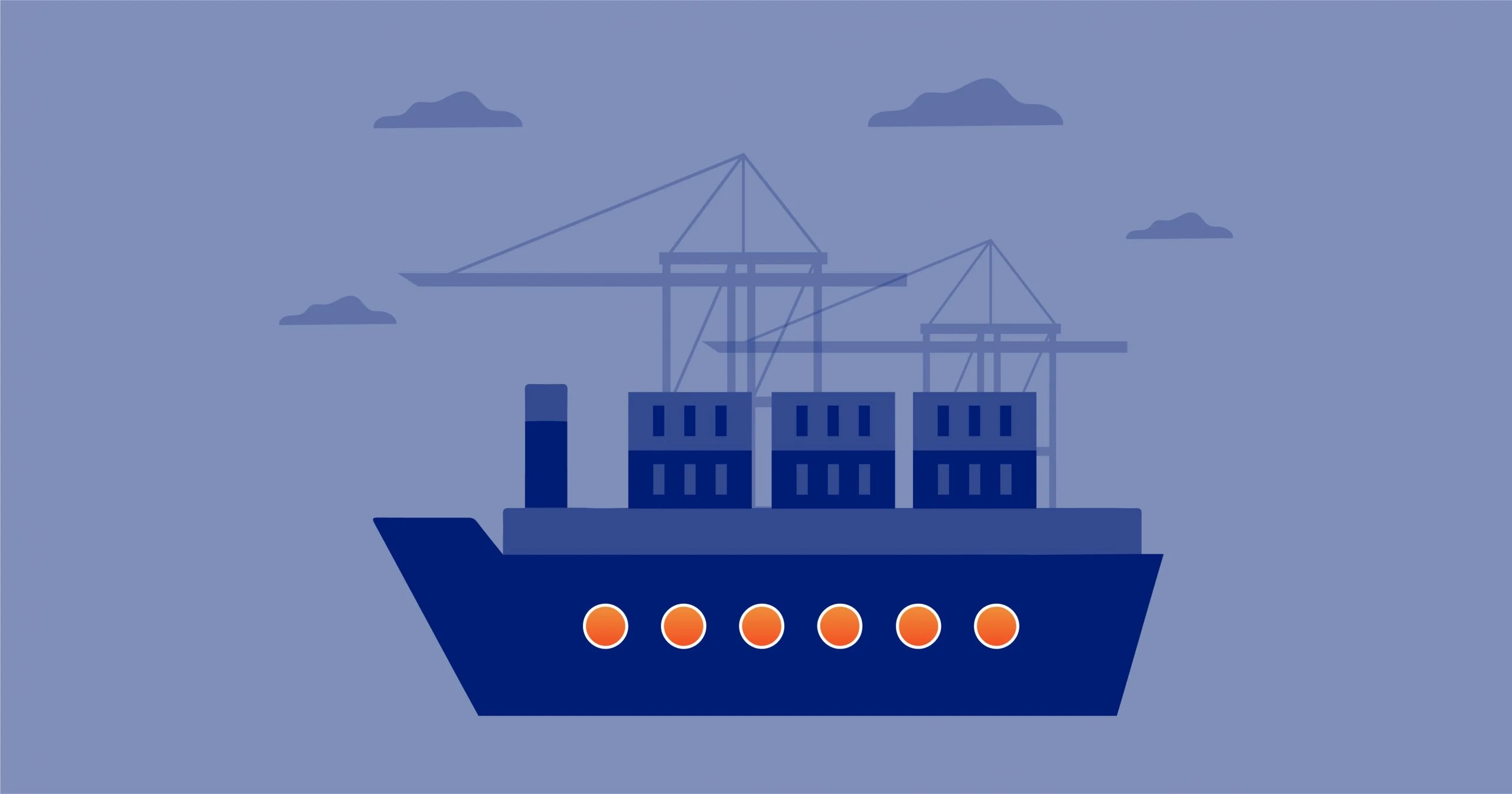
7 Tips for Retailers During the Holiday Supply Chain Crisis
Contents
This year’s hottest holiday subject line:
— Kurt Elster (@kurtinc) October 5, 2021
“In Stock, Ready to Ship”
Global commerce is an enormous multi-functioning machine, and if one cog breaks, the whole system is at risk. Consider that quite a few cogs are currently broken, and we’re seeing the effects all the way down—impacting ecommerce businesses, retailers, and brands of all sizes.
The global supply chain has been suffering since early 2020 when the pandemic first reared its ugly head, but this year’s crisis is a whole new beast. Consumer demand came back stronger than ever, but the supply infrastructure hasn’t been able to keep up. And with the Great Resignation of spring 2021, workers for key roles are nearly impossible to find. Companies are experiencing staffing issues at all levels of the supply chain, from port workers, to delivery drivers, to retail workers and everyone in between.
In early August 2021, news outlets began reporting on the enormous consequences the supply chain crisis would have on the holiday season. Two months later and retailers are seeing these effects firsthand: Empty shelves. Extended shipping times. Inflated prices. Labor shortages. And all for an audience of customers with cash to spend—up to $1.3 trillion nationally, according to projections from Deloitte.
What can retailers do to prepare for the holiday season amidst supply chain chaos? We compiled a list of actionable tips and advice for ecommerce business owners to make the best of a bad situation.
The 2021 Supply Chain Crisis in a Nutshell
High-traffic ports in the U.S. West Coast are so backed up that ships have to wait in the harbor for weeks to unload their containers. That means much-needed inventory is sitting in containers just offshore where no one can reach it. Pre-pandemic, the number of ships in the Los Angeles harbor hovered close to zero. But on a typical day in fall 2021, more than 70 ships wait to unload their goods.
Once the containers are finally unloaded, it takes more time than usual to get them onto trucks for the next stage of travel because drivers (and the trucks themselves) are in short supply. That means that containers pile up at the ports, blocking space for other ships to unload and increasing the bottleneck.
This congestion causes the price to ship a container to go up, because containers themselves are significantly harder to come by. The cost to ship a container from China to the U.S. has increased 500% in the last year alone. Many containers are even sent back to Asia empty because they are more highly valued importing goods from Asia than exporting goods from the U.S.—plus ships are reluctant to wait the extra time it takes to fill a container to ship it back.
The next stage of the supply chain is equally fraught. Trucks that transport containers to railyards have to wait hours to drop off a single container. The Washington Post profiled a trucker who said that he used to be able to pick up and transport seven containers a day from a Chicago rail yard, but that number has dwindled down to one or two.
When trucks bring the containers to warehouses, they may discover that warehouse space itself is “sparse at best,” according to Will Schneider, founder of WarehousingAndFulfillment.com. He says, “One of the biggest issues that we are seeing relates to the scarcity of warehousing space available. Not only is available leased warehouse space sparse at best, but 3PL (third-party logistics) warehouses are being more particular in terms of choosing to help new clients that will be most profitable to them.”
Finally, last-mile delivery is held up too. The driver shortages from earlier in the chain are also playing out down the line when it comes to who brings the package to the customer’s door or to a store. Plus, brick-and-mortar shops themselves are experiencing record high levels of employee shortages. In August 2021 alone, 721,000 retail workers quit.
Long story short: the supply chain is a mess from top to bottom, and retailers are already seeing the effects. Pause. Take a deep breath. Now that you know the situation, it’s time to talk about what you can do to make the holiday season better for your business and your customers.

Prepare for Early Holiday Shoppers
The supply chain effects have not gone unnoticed by holiday shoppers. A majority plan to shop early for the holiday season this year to ensure they have access to the goods they want to buy, which you can use to your advantage. Encourage your customers to shop early with holiday promotions and marketing efforts. When on guard for stockouts, strategically plan your sales and deals to promote items you’re confident you’ll have on hand.
Alternately, retailers may decide to avoid offering sales during the holiday season altogether to “hold the line on discounts to maximize margin on the units they have available to sell in order to bring in the required revenue for the season,” according to a report from Berkeley Research Group. Regardless of your promotional plans, make sure your business is ready for an influx of shoppers well before Black Friday.

Be Open & Honest with Customers
It’s a hard truth: Out-of-stocks and shipping delays are a customer experience downer. But businesses can prepare for these snafus by communicating with customers even before they run into trouble so they know what to expect.
Check out these two examples of ecommerce customer emails that hit the nail on the head in terms of transparency and relatability.
“Shop Early & Save Your Sanity” from Holistic Habitat:
“Sorry, Your Item Is Still in the Sea” from Wargames Atlantic:

Offer Pre-Orders, Gift Cards, or Digital Downloads
Inventory concerns can keep you up at night, so encourage customers to buy products that you don’t have to worry about stocking. Offer pre-orders for select physical items you don’t yet have in stock to bring in much-needed cash and provide a gauge for customer demand. Pre-orders enable you to make a sale and let the customer get what they want regardless of inventory issues.
Digital downloads like ebooks and other downloadable products are a simple solution to inventory woes if you offer an item that resonates with your customer base. The options are limitless, from courses and guides to photos and graphics. And then there’s the ever-reliable gift card. If you’re upfront with your customer base about supply chain issues, they may be more than happy to get that gift card now so the recipient can purchase whatever they like during the (hopefully) calmer months at the beginning of the new year.

Track Shipping Deadlines
This season, shipping is guaranteed to be pricier and slower than in years past. Keep customer expectations in check by tracking shipping deadlines like a hawk. ShipStation put together a handy guide of all the major vendors’ shipping deadlines, but be sure to verify with your chosen shipping partner. For your own store promotions, add several days to those deadlines to be on the safe side. With proper planning and communication, your customers will be happy to receive their gifts in time to celebrate.

Diversify Your Vendors & Partners
Don’t put all your eggs in one basket. With high stakes this holiday season, try to build out a failsafe for your business by expanding your vendors and partnerships in case your primary sources fall through. This approach could apply to shipping partners, storage facilities, product vendors, and more.
Tyler King, CEO of My Secret Garden, says that his business ordered products from a more diverse set of vendors to provide a safety net for delayed or incomplete orders.
We placed orders for approximately 30% more product, and from a more diverse set of vendors than what we typically would in anticipation of increased demand and orders that will be delayed or that never show up.
— Tyler King (@BurtonBoarder37) September 29, 2021
For warehousing capacity risks, Will Schneider agrees. “We’ve found that finding multiple backup warehousing options as a fail safe for capacity issues during the holiday season will help retailers continue to operate during the almost certain crunch that will occur this holiday season,” he says.

Take Advantage of Automation
While many retailers and brands will be suffering from uncertainty this holiday season, automation workflows can help businesses take back some control and bring peace of mind. Automation tools can simplify your business operations at every level, saving you time and ensuring consistency across platforms.
Bill Inzeo, global retail technology strategist at Zebra Technologies, suggests, “Augment store associates and warehouse workers with both intelligent automation and intelligent workflow automation solutions…. Prescriptive analytics software can mine the data flowing into point of sale (POS) and inventory management systems to help find other issues that workers may be too busy to notice.”

Plan January Promotions
When in doubt, push that sale out. If your products won’t be arriving until after the new year, try a New Year, New You promotion, suggests John Murphy, an ecommerce CEO. The sale will not only enable your business to sell well-stocked inventory, but it will also encourage shoppers to use up those gift cards they received earlier in the season.
Concerned about focusing your efforts on Q1 instead of Q4? The holiday season is not the only time to make a sale, according to this infographic from Statista, especially if your business sells products that are not huge holiday purchases. Remember that this year is a unique one, so thinking outside the box may be what’s best for your business.
By guest contributor Leah Allen-Manning



 The Webgility Team
The Webgility Team


